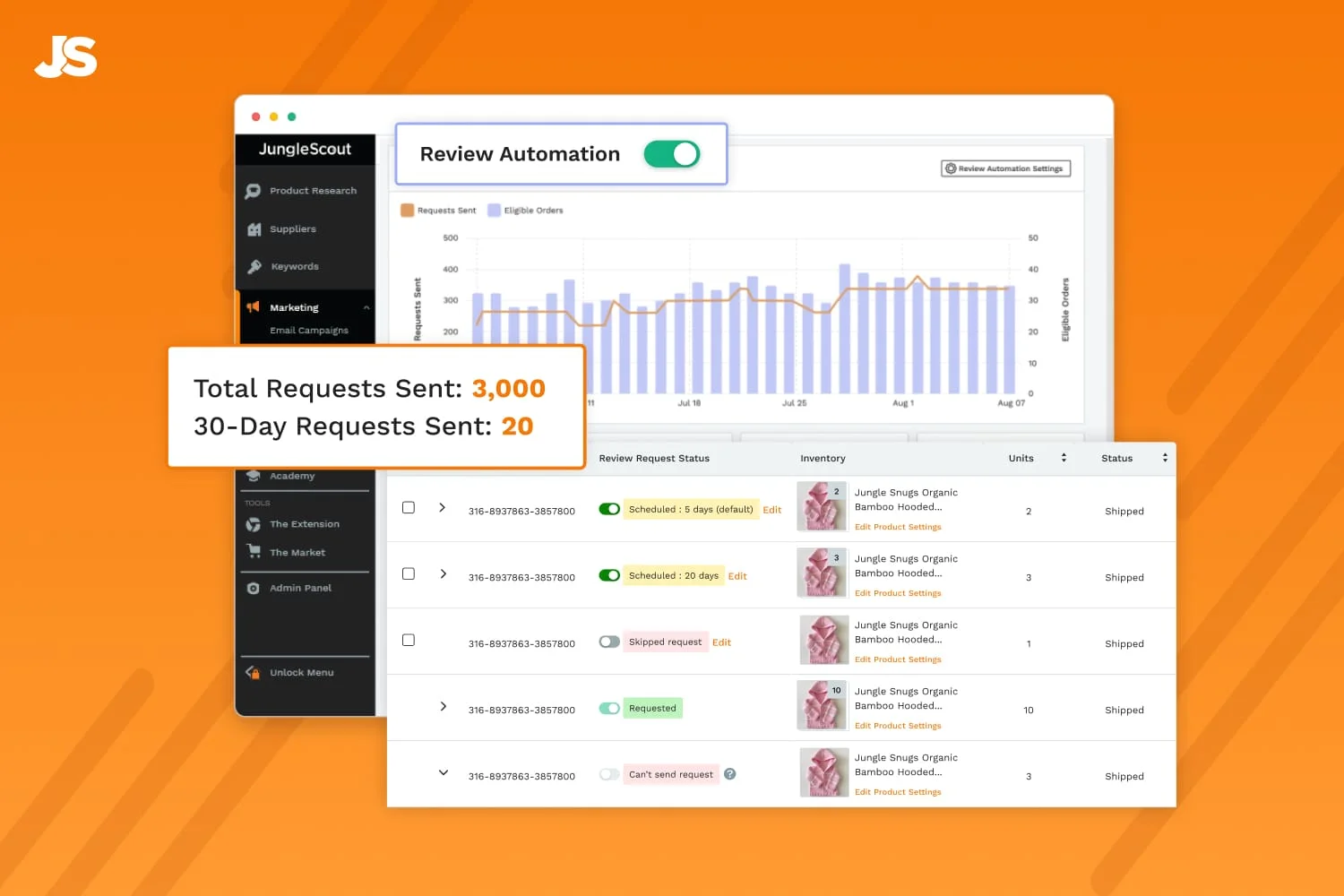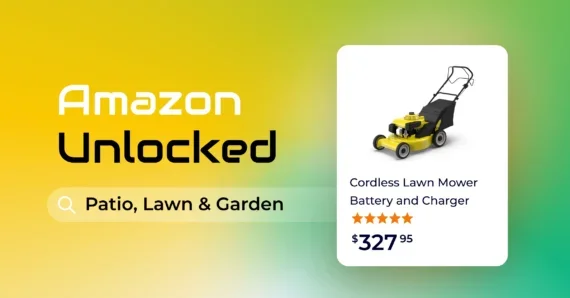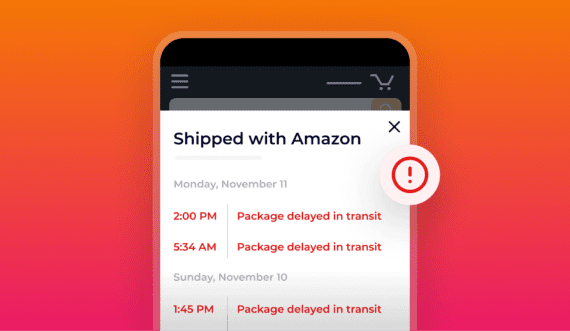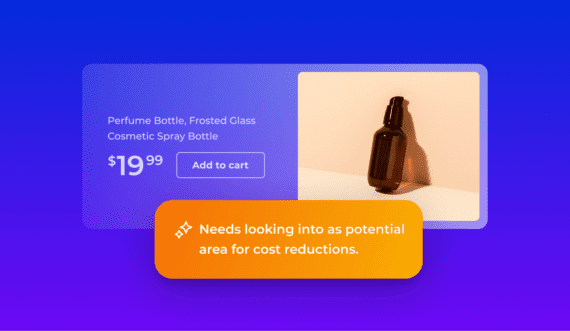In 2023, online shopping was a lifestyle mainstay: 57% of consumers shop on Amazon at least once per week, and 61% of consumers say they’re influenced by the product with the best ratings and reviews.
We know reviews are a key influencer in consumer decision-making and how much sellers value them. In fact, one of the most common Amazon seller challenges is getting product reviews. That’s why we’re providing the latest on how you can earn more for your business in 2024.
Product reviews can make or break a new Amazon FBA seller. According to our Consumer Trends Report, the majority of consumers are influenced to purchase a product that has the best reviews and ratings. When you launch a product this year, it’s important that you know how to get reviews on Amazon — and how to get them quickly and within Amazon’s ToS.
In this article, we’ll cover the seven most effective ways to get product reviews on Amazon. This includes Amazon programs and features, as well as off-Amazon strategies that third-party sellers can use to seek and gain reviews.
Important: As of this writing, all of the methods listed below are viable ways to get product reviews and do not violate Amazon’s terms of service.
How to get reviews on Amazon in 2024
Gaining new reviews on your listings is hard but not impossible. Let’s go over seven effective ways to grow your review count on Amazon!
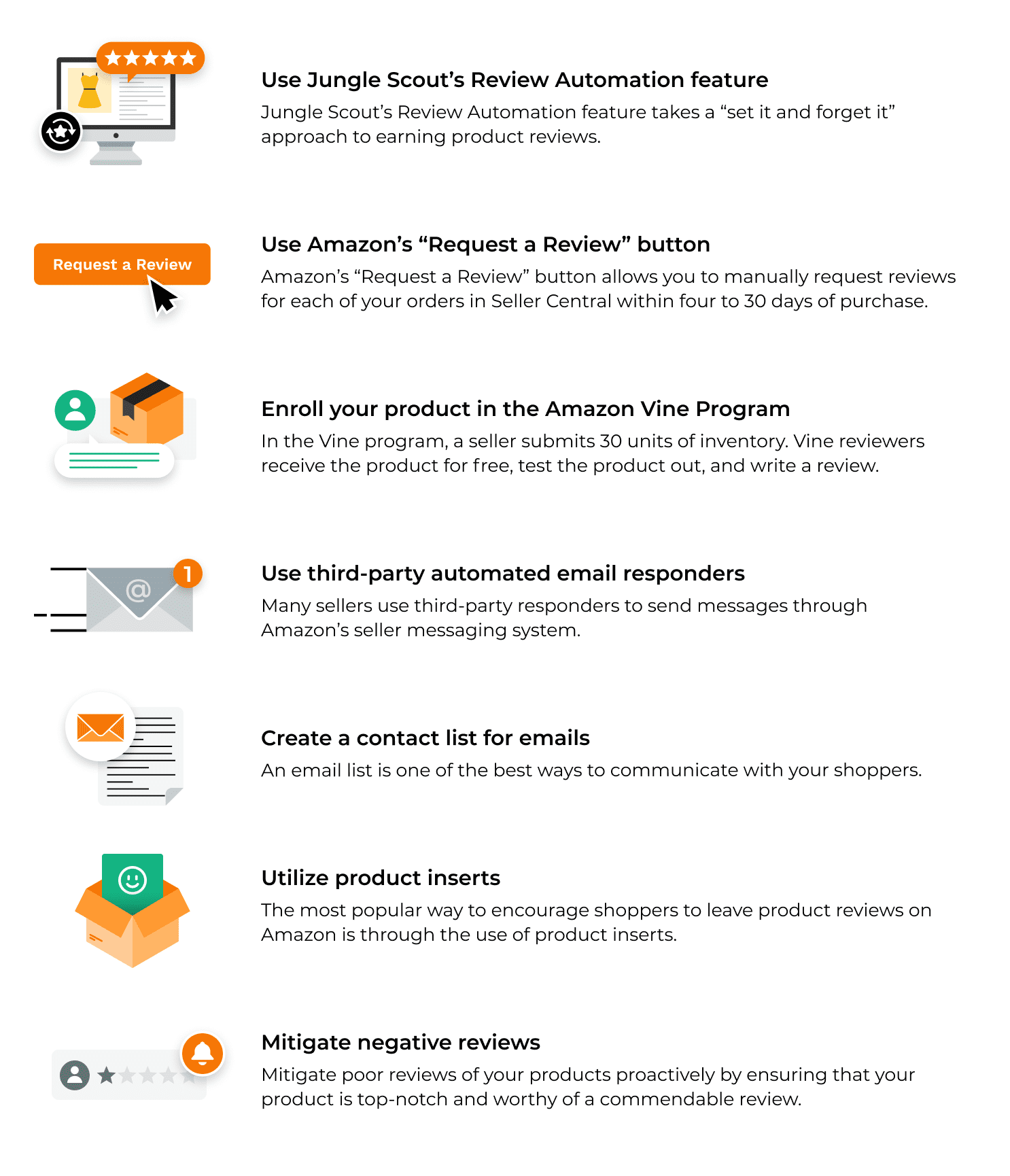
1. Use Jungle Scout’s Review Automation feature
This feature inside Jungle Scout is the easiest way to request reviews from your Amazon customers. Jungle Scout’s Review Automation feature takes a “set it and forget it” approach to earn product reviews.
This first-of-its-kind, Amazon ToS-approved feature sends automated review requests to customers who have purchased your product. While you can manually request reviews in bulk with the Jungle Scout Chrome Extension, this in-app tool streamlines the process by automatically doing it for you. It eliminates the tedious task of manually requesting reviews from buyers in Seller Central so you can save time, and invest it back into your business.
You can easily see the status of review requests and track how much time you’ve saved on your Review Automation dashboard. Never miss an opportunity to earn a review — simply turn on the feature, and you’re good to go.
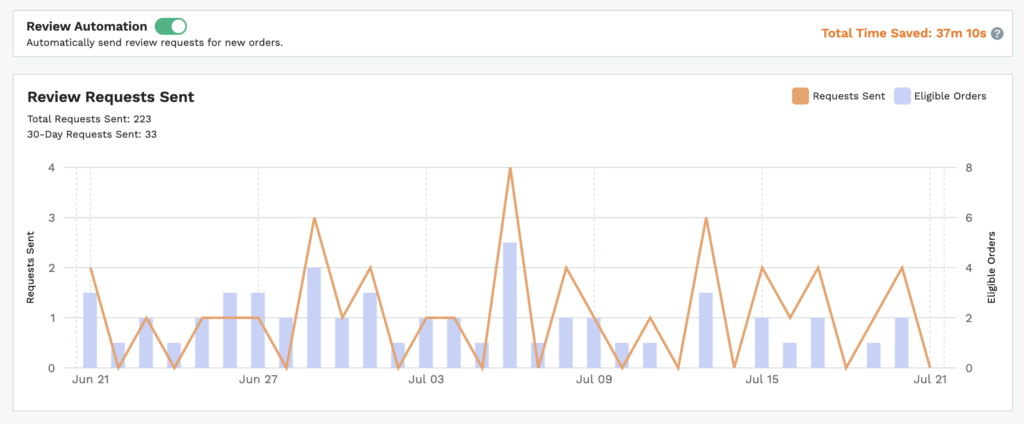
Review Automation also allows sellers to skip review requests for orders or specific products, delay review requests for orders, and create a more detailed and customizable order table.
Skipping
If you do not want Review Automation to send a review request for a specific order or product, you can turn on the skipping feature, and review requests will not be sent.
- Skip Review Requests for Orders: The ability to skip review requests for specific orders based on the user settings. The user can select an Amazon order ID and Review Automation will not send out a review request.
- Skip Review Requests for Products: The ability to turn off review requests for a specific product or products. Select the ASINs that don’t require a review request.
Review requests will not be sent for the order if it contains a product whose product settings are set to “Do not send review request.”
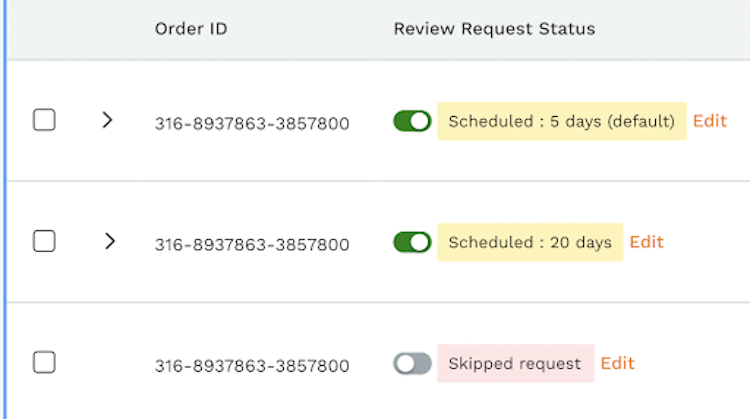

Delaying
The delay feature allows sellers to customize when review requests are sent out. These time delays can be set at three different levels.
- Marketplace: Change the send time for all ASINs and orders in a marketplace.
- Product: Change the send time for all orders of a specific product.
- Order: Change the send time for an individual order.
This feature can be very useful for products that need more time for a consumer to use and evaluate, such as a bottle of daily vitamins. If a review request is sent the day after the vitamins are delivered, the customer will not have had enough time to use the product and evaluate how it has worked for them.
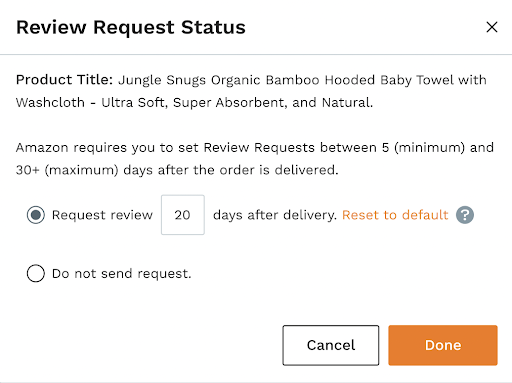

Informing
This feature makes it easier for sellers to customize the Review Automation dashboard. These new widgets provide more insight into how many reviews are getting set out and provide a more accurate estimate of how much time you are saving with the tool.
- Redesign of the Order Table: New columns added showing the orders, product name, and images
- New Review Request Status: More detailed statuses for each order in the table
- Request Canceled: Seller cancels the review request for an order
- Scheduled: Scheduled to be sent
- Request Sent: The review request was sent for the order
- Amazon Issue: When there is any syncing issue, Review Automation will try to resend the request three times
- Refunded Order: If an order is refunded, a request will not be sent
- Ineligible: When an order is canceled or Amazon doesn’t allow the request to be sent
- *If the product is outside of the 5-30 day window
- Bulk Operations: Change the request status of orders in bulk
- Filter by Status: The ability to filter the results in the table based on status
- Updated Widgets: Shows important stats related to reviews (Time Saved, Request Sent, etc.)
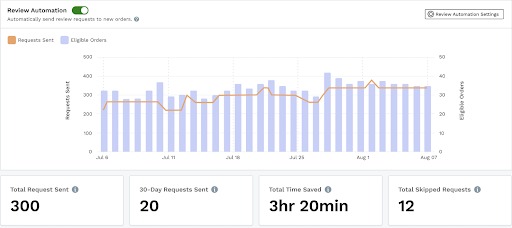
Jungle Scout subscribers can also take advantage of other multiple tools that enable you to get more Amazon reviews.
The Review Automation tool is available through the Jungle Scout Suite and Professional plans.
2. Use Amazon’s “Request a Review” button
Amazon’s “Request a Review” button allows you to manually request reviews for each of your orders in Seller Central within four to 30 days of purchase.

This is an incredibly powerful feature that can exponentially increase your chances of receiving a review.
Here’s some proof: Prior to the release of the “Request a Review” button on March 8, 2020, the average review increase for orders was 3.6 reviews. For 94.7% of sellers who used “Request a Review” after it was released, the average increase jumped to 25.9 reviews. That’s a massive difference!
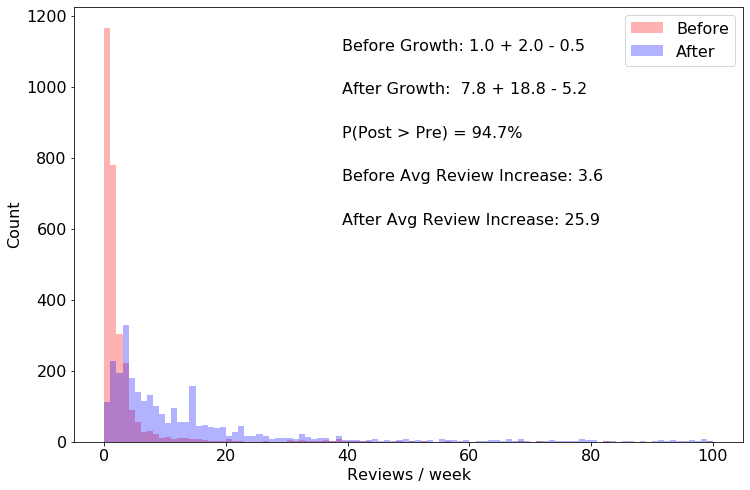
Of course, going through each and every order to click the “Request a Review” button can be tedious and time-consuming. This is where Review Automation and our next solution come into play.
Bulk Request Review
If you have Jungle Scout’s Extension, you can request reviews for your Amazon FBA orders in bulk, rather than sending a request for each individual order.
On your Amazon Seller Central order page, click on the button for Jungle Scout’s Extension. It will then open and ask you to add additional permissions. Once you agree to the permissions, a new “Request Reviews on This Page” button will appear on the far right on your orders list. When the requests are done sending, the button will change to say “Finished Requesting Reviews.”

Select a date range (we recommend between four and 30 days as that is the time period during which Amazon allows you to request reviews) and click the button. Amazon will then automatically send review requests to all of the orders on that page that qualify for the “Request a Review” button.
You can also submit individual requests without clicking on the orders. That way you won’t have to go through each individual post.
Bulk Requests in the Extension is available with all Jungle Scout plans.
3. Enroll your product in the Amazon Vine Program
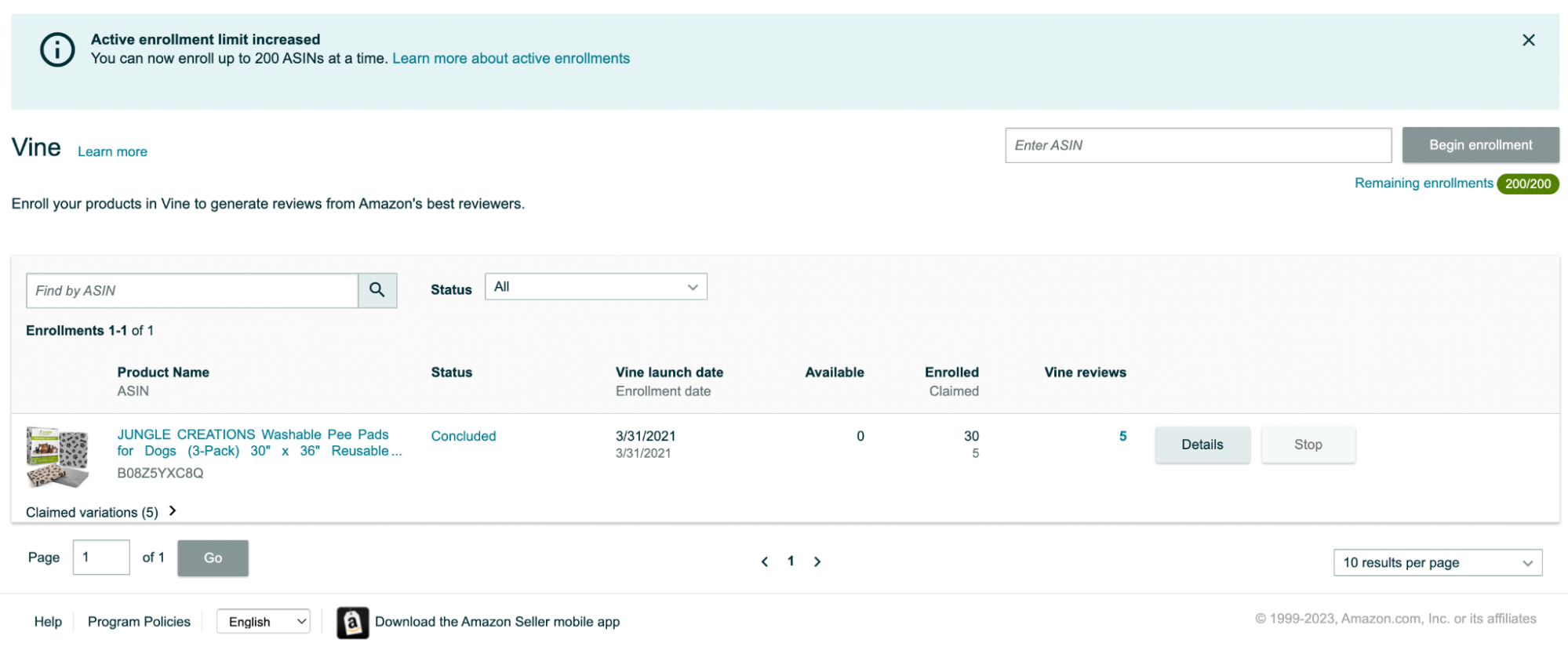
Amazon’s Vine Program is open to sellers who have Amazon brand-registered products and fewer than 30 reviews.
In the Vine program, a seller submits 30 units of inventory. Vine reviewers receive the product for free, test the product out, and write a review.
In many ways, it is similar to the incentivized review programs banned by Amazon in late 2016. The only difference now is that the reviewers in the program are being vetted by Amazon.
According to Amazon, “25% of reviews received occur within 5 days of the order, while 99% of reviews received occur within 35 days of the order,” so (naturally) this is a game-changer, as it helps newly registered products get reviews fast.
Amazon Vine does have an enrollment fee but the actual fee depends on how many units you enroll.
| Units Enrolled | Vine Enrollment Fee |
| 1-2 | $0 |
| 3-10 | $75 |
| 11-30 | $200 |
If your product does not receive any reviews within 90 days, you will not be charged an enrollment fee.
4. Use third-party automated email responders
In addition to Amazon’s internal automated responder, many sellers use third-party responders to send messages through Amazon’s seller messaging system.
It’s important to note, however, that Amazon limited the quantity and types of messages that can be sent via its Seller Messaging System. From Amazon:
“You may send proactive Permitted Messages for the following reasons: resolving an issue with order fulfillment, requesting additional information required to complete the order, asking a return-related question, sending an invoice, requesting product review or seller feedback or both, scheduling the delivery of a heavy or bulky item, scheduling a Home Services appointment, verifying a custom design, or any other reason where the contact is required for the buyer to receive their purchase.
“Permitted Messages do not include any of the following message types (in many cases we are already emailing customers with this information on your behalf):
- Order or shipping confirmations
- Messages that say only “Thank you” or that you are here to help if buyers have any problems
- Marketing or promotional messaging, including coupons
- Language that either incentivizes or persuades the buyer to submit positive product reviews or seller feedback, including by offering compensation, money, gift cards, free or discounted products, refunds, rebates or reimbursements, or future benefits
- Language that requests removal or an update of an existing product review
- Language that requests a product review only if they have had a positive experience with the product
- A repeat request (per order) for a product review or seller feedback”
Basically, you can only send permitted messages to request for a review/feedback or where contact is required. You can no longer send shipment updates, thanks for ordering, etc.
5. Create a contact list for emails
Since the seller messaging system and third-party automated responders have become limited, you will need to find other ways to communicate with your shoppers.
Remember: as long as they’re buying your products via Amazon, they’re Amazon’s customers. To get past this hurdle, you will need to build your brand off Amazon, and one of the best ways to do that is by building your own email list.
Thankfully, there are a number of ways to create an email list. You can build one through social media. Or you can create a blog that asks for people to subscribe. Once you have a mailing list, you can request reviews from those who have purchased from you.
6. Utilize product inserts
Easily, the most popular way to encourage shoppers to leave product reviews on Amazon is through the use of product inserts. Many sellers insert a card into their packaging, asking shoppers to leave a review.
However, product inserts have recently caught the attention of Amazon. They’ve noticed that some sellers have been breaking the “guidelines” described in the “Don’t forget to follow the rules” section of this article.
The example picture below is against Amazon’s terms. You cannot divert negative reviews or tell people to email you instead of leaving a negative review.
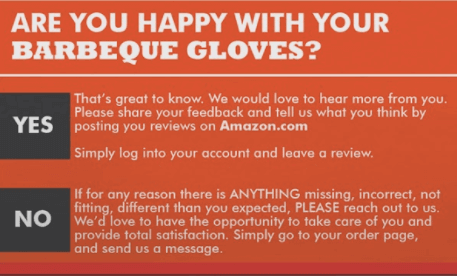
Here are some best practices for product inserts:
- Ask for product reviews, but remain neutral. Telling people to leave you a five-star review — or even showing a picture of five-stars — is against Amazon’s guidelines.
- Give useful information about your company and product, such as tips on how to use the product correctly.
Never ask a customer to contact you outside of the Buyer-Seller Messaging platform in Seller Central. Good customer service goes a long way toward preventing negative product reviews.
7. Mitigate negative reviews
You can mitigate poor reviews of your products proactively by ensuring that your product is top-notch and worthy of a commendable review. Reactively, you can address any customer service issues that may arise.
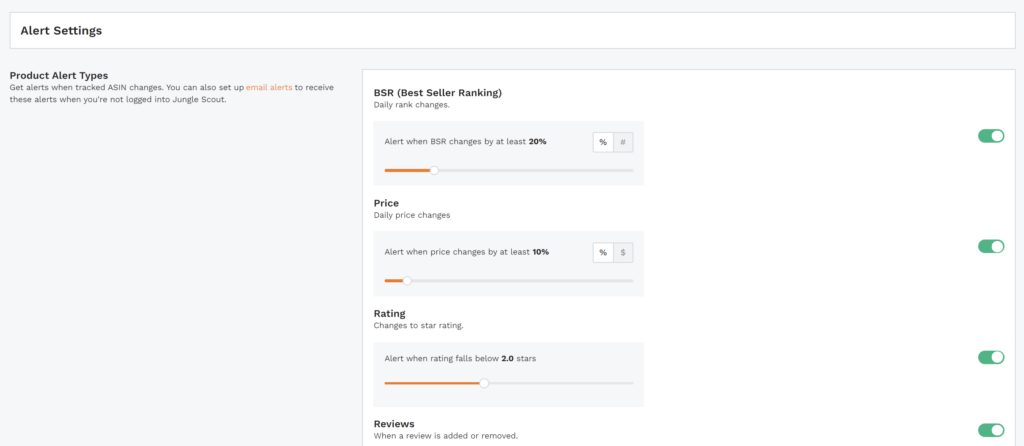
Plus, by using a tool like Jungle Scout’s Alerts, you can be notified whenever you get a poor review. Previously, Amazon did not allow sellers to reach out directly to customers who left negative reviews. Currently, however, sellers who are enrolled in Brand Registry can now contact customers.
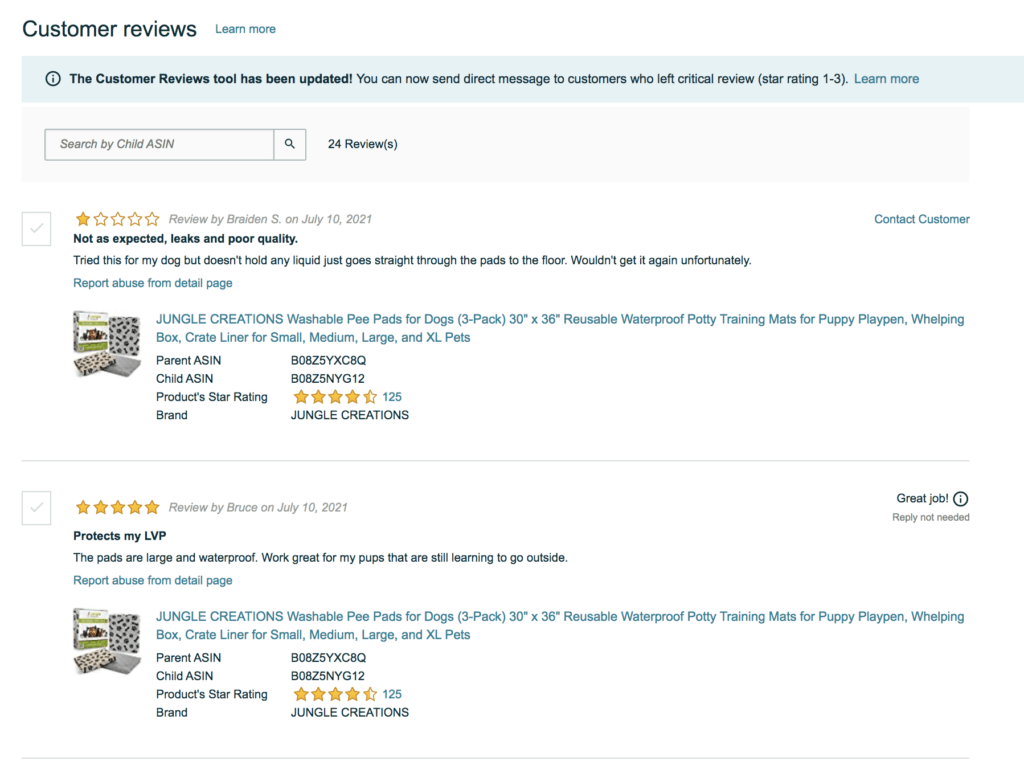
This new feature can help you improve the customer’s experience with your brand, giving you a chance to have them remove their negative review, or even better — change it to a positive one.
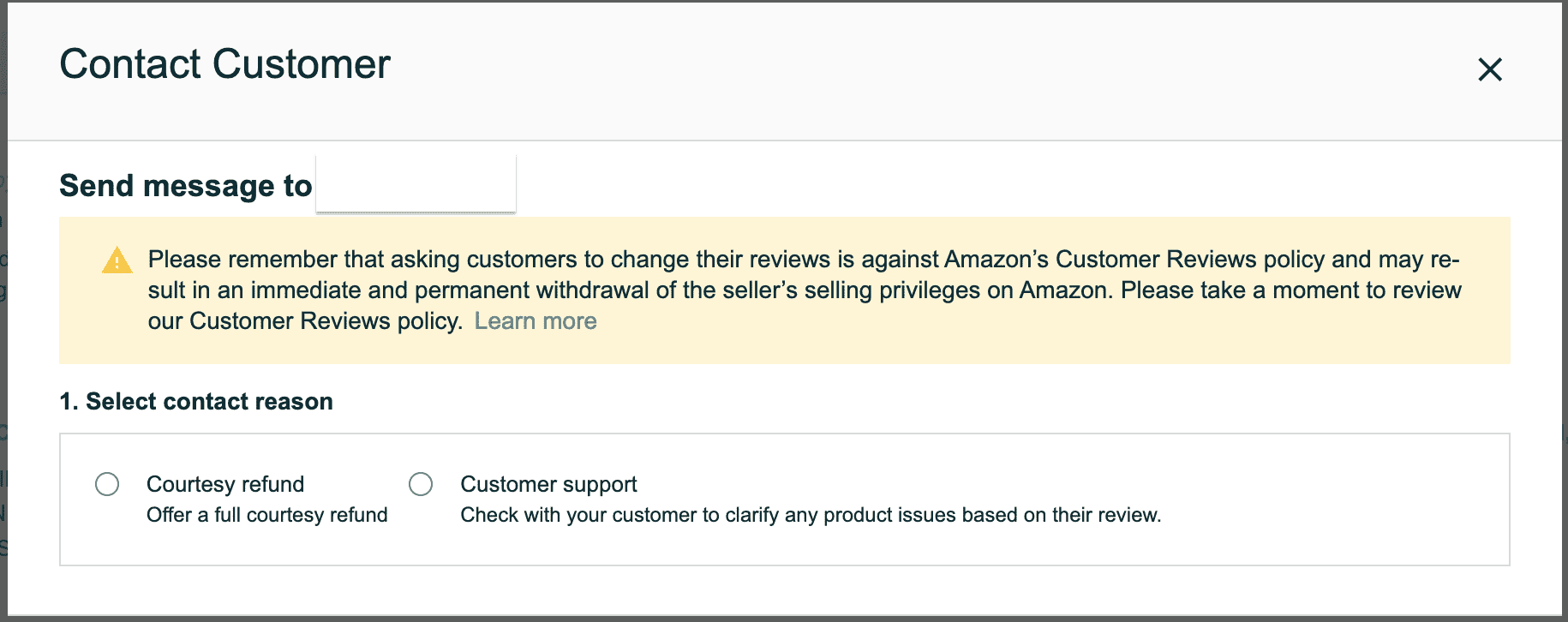
Amazon product review rules
Amazon takes its product reviews very seriously. In fact, many sellers are suspended from the platform due to review manipulation.
When you’re trying to get reviews on Amazon, it’s important that you understand the difference between legal methods and black hat tactics (which can get your business suspended from Amazon).
Here are some essential Amazon product review rules you should know — and follow:
1. You can’t incentivize reviews
As recently as 2016, you could offer products at a low price — or even for free — in exchange for a product review. It was a strategy that helped countless sellers build up their reviews and gain popularity.
However, Amazon discovered that, more often than not, this led to over-inflated reviews. So, because far more products were receiving a 4-5 star rating than were warranted, Amazon banned this practice in 2016. Offering back-end discounts for positive reviews will likely lead to suspension.
2. You can’t cherry-pick reviews
Another thing Amazon has put a stop to within the last couple of years is “cherry-picking” reviews. In other words, sellers cannot ask for reviews from customers they know had a good experience while ignoring those who’ve had neutral or negative experiences.
3. How to buy Amazon reviews
You can’t! Buying Amazon reviews, whether real or fake, is a big no-no with Amazon. If Amazon finds out you used a service to pay for reviews, your account will be suspended.
The only way to “buy” Amazon reviews is through the Amazon Vine Program, which we discussed above. Do not purchase reviews from any other third service that promises to give you real reviews on Amazon.
How to get Amazon reviews in 2024
Hopefully, the information in this article has given you good ideas for how to get Amazon product reviews in 2024.At the minimum, use Amazon’s methods, as they are 100% free of any “gray areas”. And always make sure to play by Amazon’s rules. Remember: A few extra sales garnered by using a black hat tactic isn’t worth putting your entire seller account in jeopardy.
To learn more about Amazon’s terms of service, be sure to read our breakdown of Amazon’s product review terms of service.
You can also read about what happens to sellers who incorporate “black hat” tactics in their selling strategies.
Start automating Amazon reviews today.
Click the button below to learn more about Jungle Scout, including how you can get Review Automation to get more product reviews for your business!
Brian Connolly is an Amazon seller, ecommerce expert, and writer for Jungle Scout. He lives in the New Jersey Shore area with his wife and cat. When he isn’t writing advice online for aspiring and experienced Amazon sellers for Jungle Scout, he spends his free time boating, fishing, and selling boating-themed items on his Amazon business.

